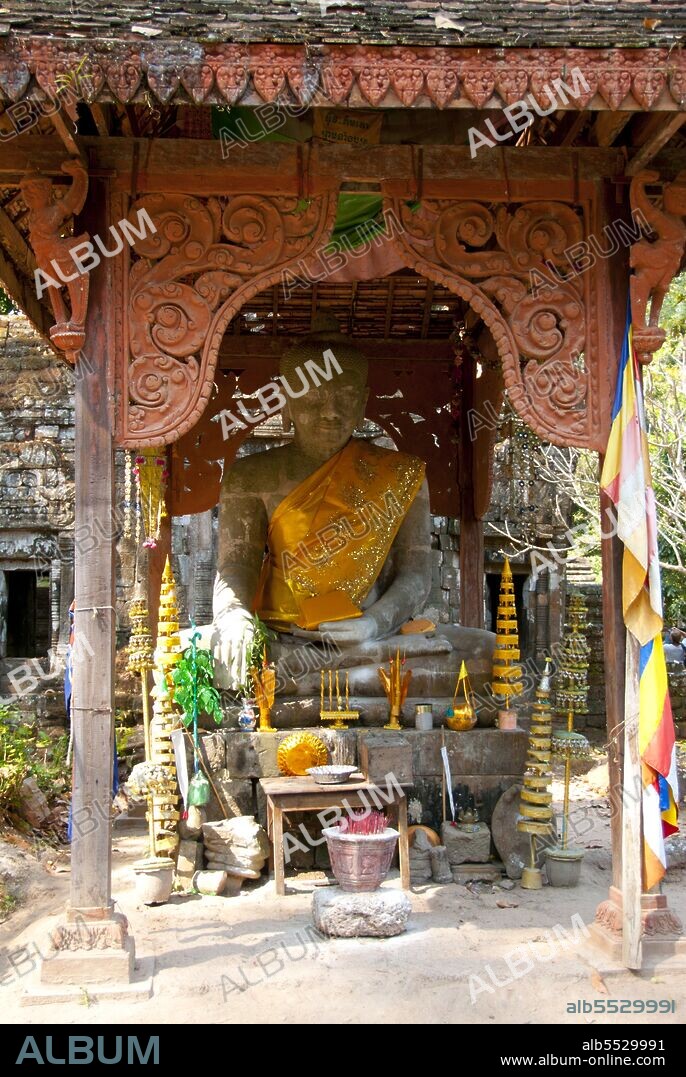alb5529991
Cambodia: The large Tep Pranam Buddha seated in the Bhumisparsha mudra position, Angkor Thom, Angkor.

|
Zu einem anderen Lightbox hinzufügen |
|
Zu einem anderen Lightbox hinzufügen |



Haben Sie bereits ein Konto? Anmelden
Sie haben kein Konto? Registrieren
Dieses Bild kaufen

Titel:
Cambodia: The large Tep Pranam Buddha seated in the Bhumisparsha mudra position, Angkor Thom, Angkor.
Untertitel:
Siehe automatische Übersetzung
Tep Pranam is a late period (16th century CE) Buddhist sanctuary, probably originally dedicated to the Mahayana school, but now in active use as a place of Theravada worship, with a large sandstone Buddha image in the seated ‘calling the earth to witness’ mudra (posture). Angkor Thom is located 1.5km (one mile) north of Angkor Wat. It was built in the late 12th century by King Jayavarman VII, and covers an area of 9 km², within which are located several monuments from earlier eras as well as those established by Jayavarman and his successors. At the centre of the city is Jayavarman's state temple, the Bayon, with the other major sites clustered around the Victory Square immediately to the north. Angkor Thom was established as the capital of Jayavarman VII's empire, and was the centre of his massive building programme. One inscription found in the city refers to Jayavarman as the groom and the city as his bride. Angkor Thom seems not to be the first Khmer capital on the site, however, as Yasodharapura, dating from three centuries earlier, was centred slightly further northwest. The last temple known to have been constructed in Angkor Thom was Mangalartha, which was dedicated in 1295. In the following centuries Angkor Thom remained the capital of a kingdom in decline until it was abandoned some time prior to 1609. It is believed to have sustained a population of 80,000-150,000 people.
Bildnachweis:
Album / David Henley/Pictures from History/Universal Images Group
Freigaben (Releases):
Model: Nein - Eigentum: Nein
Rechtefragen?
Rechtefragen?
Bildgröße:
3282 x 4898 px | 46.0 MB
Druckgröße:
27.8 x 41.5 cm | 10.9 x 16.3 in (300 dpi)
Schlüsselwörter:
ANGKOR WAT • ARCHITEKTUR • ASIEN • ASIEN, KONTINENT • BUDA • BUDDHISMUS • BUDDHISTISCH • GESCHICHTE • HINDU • HINDUISMUS • KAMBODSCHA • KHMER • KONTINENT, ASIEN • KUNST • RELIGION • SIEM REAP • TEMPEL • ZEITGESCHICHTE
 Pinterest
Pinterest Twitter
Twitter Facebook
Facebook Link kopieren
Link kopieren Email
Email
